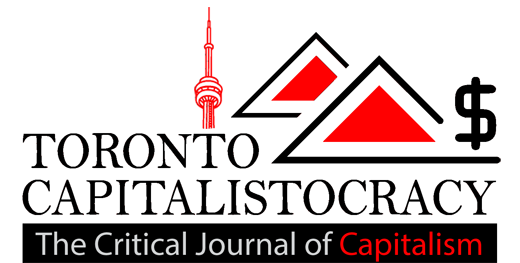Headline News
Missing Malaysian Flight MH370 doubles scale, pilots being probed

Malaysia transport minister says they have asked US, China, France and various other countries for further satellite data and thus 25 countries in total were now involved in the search of the Malaysian airline MH370 that went missing last week.
While addressing a news conference, he said that the probe was now re-focusing on passengers, crew and the ground staff. The pilot, co-pilot had not asked to fly together on flight MH370 and both their houses have been visited for investigation, Hishamuddin Hussein said.
“Can’t comment on speculative theories… understand the hunger for new details, but don’t want to jump to conclusions,” he said.
The Malaysian government also appealed for international help in the search for the Malaysia Airlines plane across two corridors stretching from the Caspian Sea to the southern Indian Ocean, diplomats said.
No trace of the Boeing 777-200ER has been found since it vanished on March 8 with 239 people on board. Moreover, investigators believe it was diverted by someone who knew how to switch off its communications and tracking systems.
At a news conference on Saturday, Malaysian Prime Minister Najib Razak said investigators believed somebody steered the plane west, far from its scheduled route.
Electronic signals suggest that it continued flying for nearly seven hours after being last spotted by Malaysian military radar off the country’s northwest coast.
The satellite data revealed by Najib suggests the plane could be anywhere in either of two arcs: one stretching from northern Thailand to the border of Kazakhstan and Turkmenistan, or another a southern arc heading from Indonesia to the southern Indian Ocean.Missing Malaysian Flight MH370 Pilots
“We are not ruling out any sort of motivation at the moment,” a senior police official with knowledge of the investigation told Reuters.
Najib said that in light of the mounting evidence that the plane was deliberately diverted, investigation into the aircraft’s crew and passengers would be stepped up. Within hours, special branch officers had searched the homes of the captain, 53-year-old Zaharie Ahmad Shah, and first officer, 27-year-old Fariq Abdul Hamid.
An experienced pilot, Zaharie has been described by current and former co-workers as a flying enthusiast who spent his off days operating a life-sized flight simulator he had set up at home.
Facebook postings suggest the pilot was a politically active opponent of the coalition that has ruled Malaysia for the 57 years since independence.
Opposition leader Anwar Ibrahim was convicted of sodomy and sentenced to five years in prison a day before the plane vanished, in a ruling his supporters and international human rights groups say was politically influenced.
Co-pilot Fariq was a religious person who was serious about his career, family and friends said, countering former news reports suggesting he was a cockpit Romeo who was reckless on the job.
No details have emerged of any passengers or crew with any militant links that could explain a motive for sabotaging the flight.
Experts said they doubt the possibility of militant groups involved in the event.
India had earlier been searching in two areas, one around the Andaman and Nicobar Islands and a second further west in the Bay of Bengal, both in the direction the plane was heading when it dropped off Malaysia’s military radar. Now both searches have been “paused” awaiting further instructions from Malaysia, defense officials said on Sunday.
Headline News
How Canadian churches are helping their communities cope with the wildfires

As wildfires burn across Canada, churches are finding ways to support their members and the broader community directly impacted by the crisis.
According to the Canadian Interagency Forest Fire Centre, as of June 13, there are 462 active fires across Canada – and 236 of them classified as out of control fires.
Whether it’s through phone calls or donations to community members, here’s how a few churches across Canada are handling active wildfires and the aftermath in their regions.
Westwood Hills, N.S.: St. Nicholas Anglican Church
In Nova Scotia, St. Nicholas Anglican Church and other churches in the area are collecting money for grocery cards to give to families impacted by the Tantallon wildfire.
Right outside of Halifax, N.S., the Tantallon wildfire destroyed 151 homes. More than 16,000 people evacuated the area due to the fire.
The fire is now considered contained, but Tanya Moxley, the treasurer at St. Nicholas is organizing efforts to get grocery gift cards into the hands of impacted families.
As of June 12, four churches in the area – St. Nicholas, Parish of French Village, St Margaret of Scotland and St John the Evangelist – raised nearly $3,500. The money will be split for families’ groceries between five schools in the area impacted by the wildfire.
Moxley said she felt driven to raise this money after she heard the principal of her child’s school was using his own money to buy groceries for impacted families in their area.
“[For] most of those people who were evacuated, the power was off in their subdivision for three, four or five days,” she said. “Even though they went home and their house was still standing, the power was off and they lost all their groceries.”
Moxley said many people in the area are still “reeling” from the fires. She said the church has an important role to help community members during this time.
“We’re called to feed the hungry and clothe the naked and house the homeless and all that stuff, right? So this is it. This is like where the rubber hits the road.”

Headline News
Is it ever OK to steal from a grocery store?

Mythologized in the legend of Robin Hood and lyricized in Les Misérables, it’s a debate as old as time: is it ever permissible to steal food? And if so, under what conditions? Now, amid Canada’s affordability crisis, the dilemma has extended beyond theatrical debate and into grocery stores.
Although the idea that theft is wrong is both a legally enshrined and socially accepted norm, the price of groceries can also feel criminally high to some — industry data shows that grocery stores can lose between $2,000 and $5,000 a week on average from theft. According to Statistics Canada, most grocery item price increases surged by double digits between 2021 and 2022. To no one’s surprise, grocery store theft is reportedly on the rise as a result. And if recent coverage of the issue rings true, some Canadians don’t feel bad about shoplifting. But should they?
Kieran Oberman, an associate professor of philosophy at the London School of Economics and Political Science in the United Kingdom, coined the term “re-distributive theft” in his 2012 paper “Is Theft Wrong?” In simplest terms, redistributive theft is based on the idea that people with too little could ethically take from those who have too much.
“Everybody, when they think about it, accepts that theft is sometimes permissible if you make the case extreme enough,” Oberman tells me over Zoom. “The question is, when exactly is it permissible?”
Almost no one, Oberman argues, believes the current distribution of wealth across the world is just. We have an inkling that theft is bad, but that inequality is too. As more and more Canadians feel the pinch of inflation, grocery store heirs accumulate riches — Loblaw chair and president Galen Weston, for instance, received a 55 percent boost in compensation in 2022, taking in around $8.4 million for the year. Should someone struggling with rising prices feel guilty when they, say, “forget” to scan a bundle of zucchini?

Headline News
The homeless refugee crisis in Toronto illustrates Canada’s broken promises

UPDATE 07/18/2023: A coalition of groups arranged a bus to relocate refugees to temporarily stay at a North York church on Monday evening, according to CBC, CP24 and Toronto Star reports.
Canadians live in a time of threadbare morality. Nowhere is this more obvious than in Toronto’s entertainment district, where partygoers delight in spending disposable income while skirting refugees sleeping on sidewalks. The growing pile of luggage at the downtown corner of Peter and Richmond streets resembles the lost baggage section at Pearson airport but is the broken-hearted terminus at the centre of a cruel city.
At the crux of a refugee funding war between the municipal and federal governments are those who have fled persecution for the promise of Canada’s protection. Until June 1, asylum seekers used to arrive at the airport and be sent to Toronto’s Streets to Homes Referral Assessment Centre at 129 Peter St. in search of shelter beds. Now, Toronto’s overcrowded shelter system is closed to these newcomers, so they sleep on the street.
New mayor Olivia Chow pushed the federal government Wednesday for at least $160 million to cope with the surge of refugees in the shelter system. She rightly highlights that refugees are a federal responsibility. In response, the department of Immigration, Refugees, and Citizenship Canada points to hundreds of millions in dollars already allocated to cities across Canada through the Interim Housing Assistance Program, while Ontario says it has given nearly $100 million to organizations that support refugees. But these efforts are simply not enough to deliver on Canada’s benevolent promise to the world’s most vulnerable.
The lack of federal generosity and finger-pointing by the city has orchestrated a moral crisis. It’s reminiscent of the crisis south of the border, where Texas governor Greg Abbott keeps bussing migrants to cities located in northern Democratic states. Without the necessary resources, information, and sometimes the language skills needed to navigate the bureaucratic mazes, those who fled turbulent homelands for Canada have become political pawns.
But Torontonians haven’t always been this callous.
In Ireland Park, at Lake Ontario’s edge, five statues of gaunt and grateful refugees gaze at their new home: Toronto circa 1847. These statues honour a time when Toronto, with a population of only 20,000 people, welcomed 38,500 famine-stricken migrants from Ireland. It paralleled the “Come From Away” event of 9/11 in Gander, N.L., where the population doubled overnight, and the people discovered there was indeed more than enough for all. It was a time when the city lived up to its moniker as “Toronto, The Good.”
Now, as a wealthy city of three million people, the city’s residents are tasked with supporting far fewer newcomers. Can we not recognize the absurdity in claiming scarcity?

-

 Lifestyle8 months ago
Lifestyle8 months agoOntario Line subway construction permanently shuts down beloved Toronto bakery
-

 Business8 months ago
Business8 months agoThe Canadian Armed Forces are hiring for several non-combat military jobs
-

 Business8 months ago
Business8 months agoPorter’s new loyalty program promises to match Air Canada’s Aeroplan status
-

 Business8 months ago
Business8 months agoPeople call out Sobeys for ridiculous prices after another expensive find at Ontario store
-

 Business8 months ago
Business8 months ago‘Here, everything feels much closer’: Entrepreneur says leaving Toronto for Innisfil good for business
-

 Lifestyle8 months ago
Lifestyle8 months agoWoman crashes car and runs around highway with bottle of booze on typical day in Toronto
-

 Lifestyle8 months ago
Lifestyle8 months agoCanada considers capping international student visas to address housing crisis
-

 Business8 months ago
Business8 months agoBeauty Week is back at Hudson’s Bay in Toronto and it’s time to get glam



